I’m not sure what the collective noun for a group of petrels is, but the vets and wildlife carers of New Zealand might be forgiven for thinking that it might be a wreck after this week. Two weeks of strong westerly winds have pushed thousands of Southern Ocean prions onto the land along the entire western coast of New Zealand in the biggest seabird wreck since 1974. Thousands of the bewildered seabirds have been scooped up by volunteers in the Wellington region alone to be cared for and then returned to the wild. I got word of the need for volunteers on Thursday, and so at 5 am on Saturday morning I stepped into the freezing night to go and help.
The particular rehab place we went to was in Johnsonville, north of Wellington. It is run by businessman Craig Shepard and his wife on the grounds of their home, and is basically what any birder’s home would look like if they were wealthy, an attractive home set in lovely gardens completely overrun by ducks. And swans. And geese. The three hundred or more prions were all in heated tubs in a large garage set aside for rehabilitation, when we arrived first thing in the morning a few that had gotten out of their tubs were sleeping by the glass doorway. I had assumed that the the prions would turn out to be the Fairy Prion, the common local species which I saw lots of up in Northland over Christmas, but it turned out that while tehre were a few of these the vast majority of the prions wrecked were the more southerly species, the Broad-billed Prion. This is the largest species of prion and perhaps the one that best suits the alternative name whalebird. It breeds on the Chatham Islands and some of the islands south of New Zealand, as well as Gough and Tristan da Cunha in the Atlantic. The name whalebird, incidentally, comes from the comb-like lamellae on the ridge of the bills. The lamellae are used by prions for filter-feeding. The bird takes a mouth-ful of water and then forces the water through them, trapping the planktonic organisms which it eats.
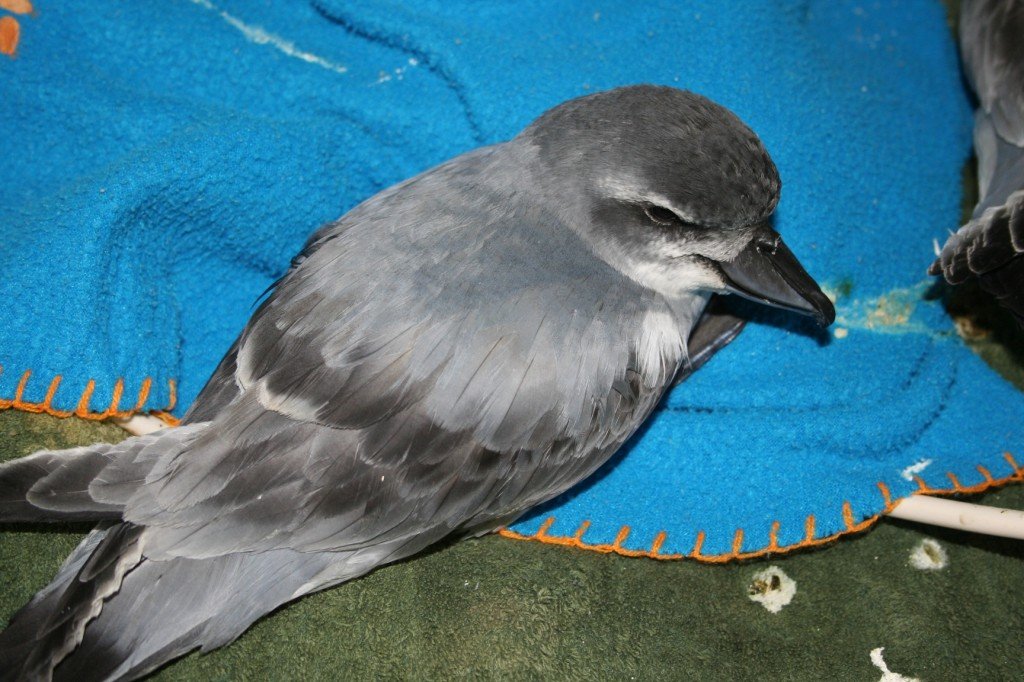 Broad-billed Prion (Pachyptila vittata) after just waking up
Broad-billed Prion (Pachyptila vittata) after just waking up
Caring for three hundred little seabirds is quite a lot of work. The birds were divided into groups, those scheduled for release that day and those that needed keeping for a little longer, so they had to be kept separate. Each bird had to be taken from its tub (which where large and comfortably held around 15 birds), washed in warm salt water, allowed to dry a little (especially if they had lots the waterproofing) then tube fed a mixture of blended fish, then placed back into a cleaned tub. There was a vet on hand to assess the birds as they came through the conveyor belt operation and lots of people running hither and thither with handfuls of petrels.
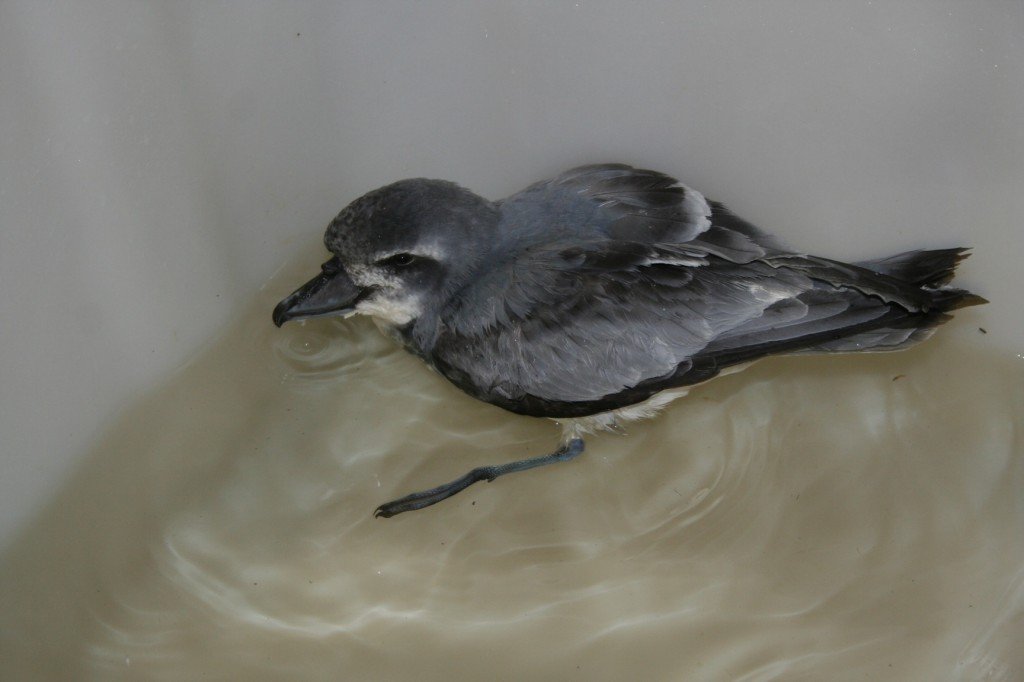 Splashy splashy – Broad-billed Prion gets a bath
Splashy splashy – Broad-billed Prion gets a bath
Towards the end of the session a bunch of vets fromthe Ministry of Agriculture and Forestry dropped in to collect blood samples as part of an ongoing survey of disease in animals in New Zealand, so pretty soon we were helping them as well. Then, after a well deserved cup of tea we boxed up all the guys that were able to be released and sent them on their way. TVNZ covered the release, out at sea, and you can watch the clip here.
One thing I did notice while handling that many prions were a very small number that were clearly not Broad-billed Prions or the smaller daintier Fairy Prions. Prion identification is very tricky, and some species are essentially inseparable at sea. In the hand is another matter, but I didn’t have my guide books with me. But I was able to take some photos and work out what it was at home. I initially thought it was an Antarctic Prion, a species that is virtually identical to the Salvin’s Prion. The best feature to distinguish the two is the width of the bill or the fact that on the Salvin’s Prion the lamellae that line the bill are visible at the base of the bill. This is not, as you might imagine, an easy feature to pick out at sea on a pitching boat.
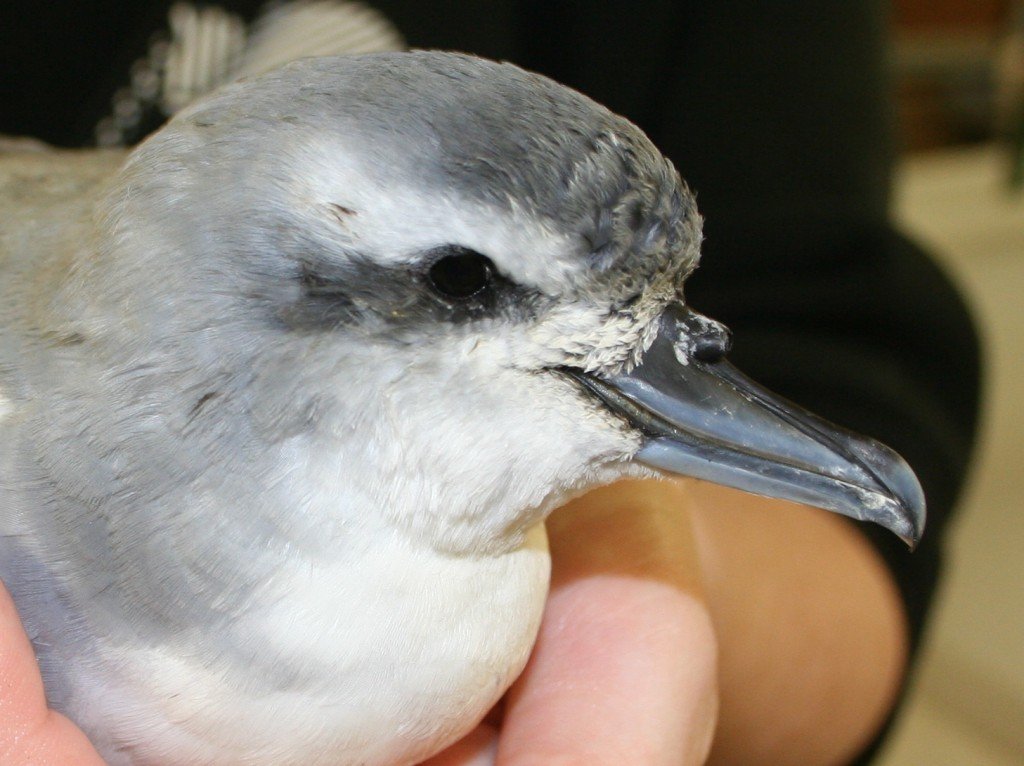 Lamellae? I can’t see no stinking lamelle.
Lamellae? I can’t see no stinking lamelle.
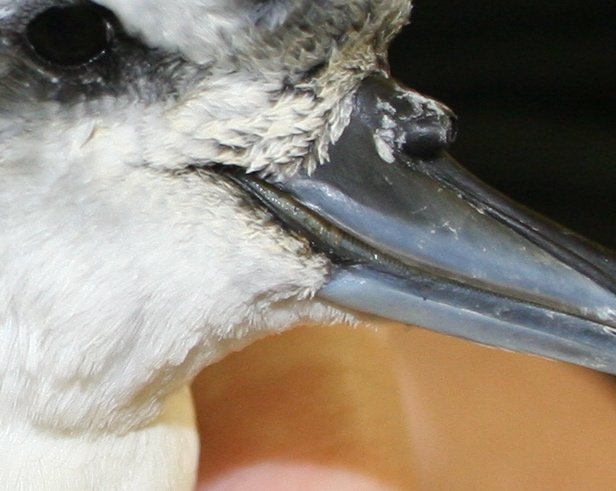 Oh, there they are. This is a Salvin’s Prion (Pachyptila salvini)
Oh, there they are. This is a Salvin’s Prion (Pachyptila salvini)
The Salvin’s Prion breeds on four islands in the South Indian Ocean, Crozet, Prince Edward, St Paul and Amsterdam Islands. At sea it ranges from Africa to New Zealand and around 100 are washed up a year here.
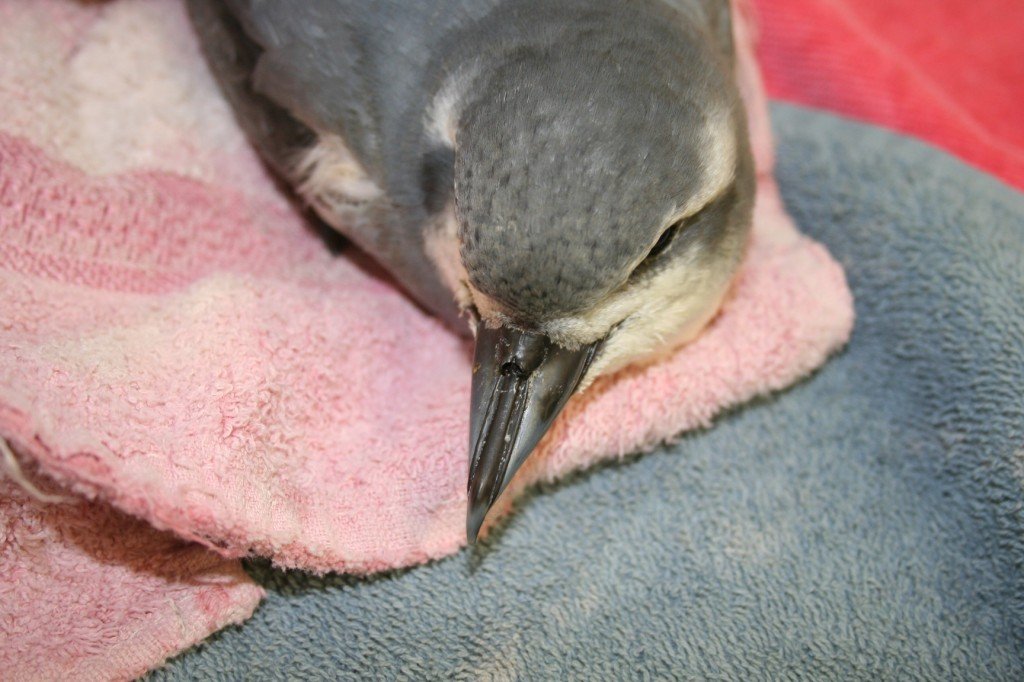 The bill of a Salvin’s Prion from above. It is quite wide, the widest of any prion save the Broad-billed Prion.
The bill of a Salvin’s Prion from above. It is quite wide, the widest of any prion save the Broad-billed Prion.
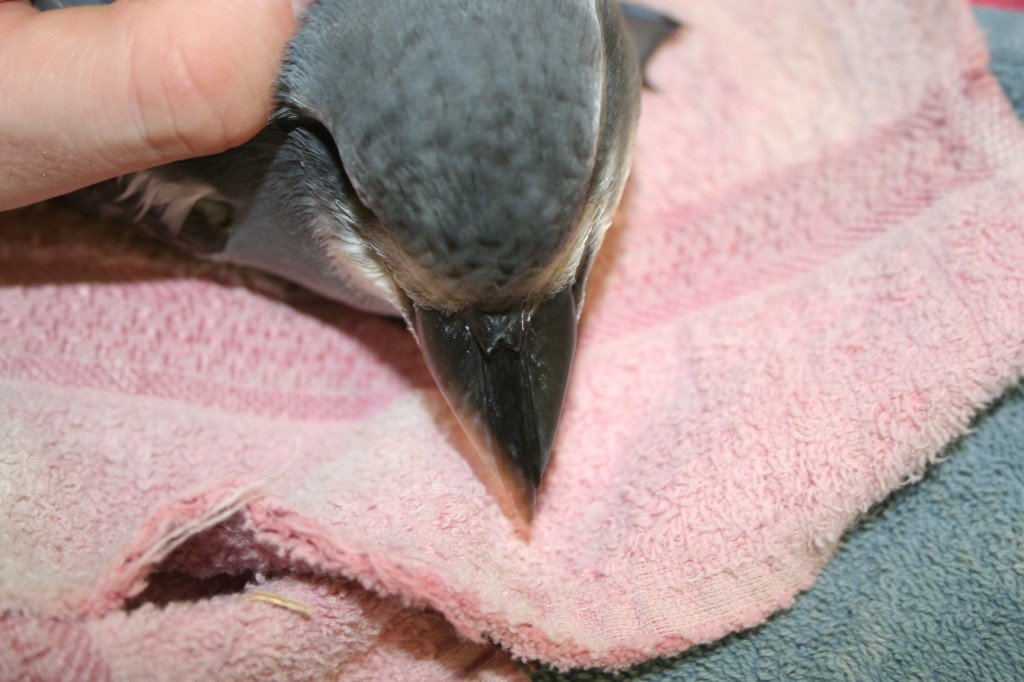 By way of comparison, a Broad-billed Prion from above.
By way of comparison, a Broad-billed Prion from above.
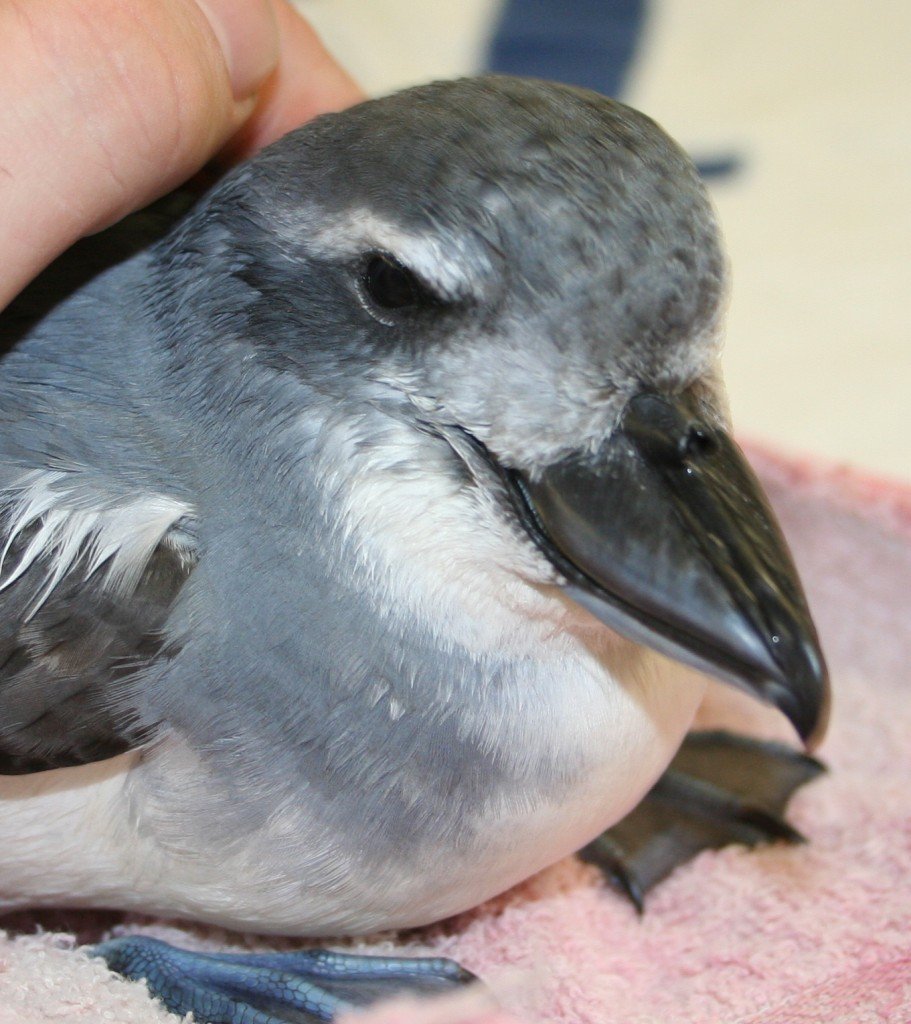 The lamellae are faintly visisble in this photo of a Broad-billed Prion as well.
The lamellae are faintly visisble in this photo of a Broad-billed Prion as well.
Finally, Colin Miskelley at Te Papa/National Museum of New Zealand has a must-read article about the prion wreck and the potential impact it might have on the New Zealand population of Broad-billed Prions.


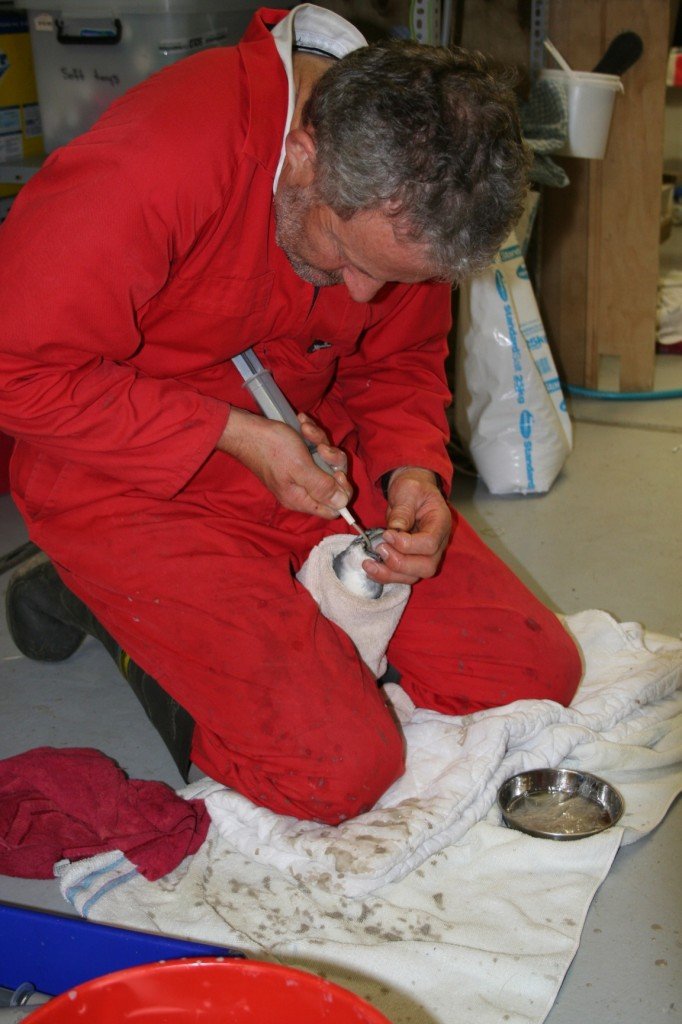
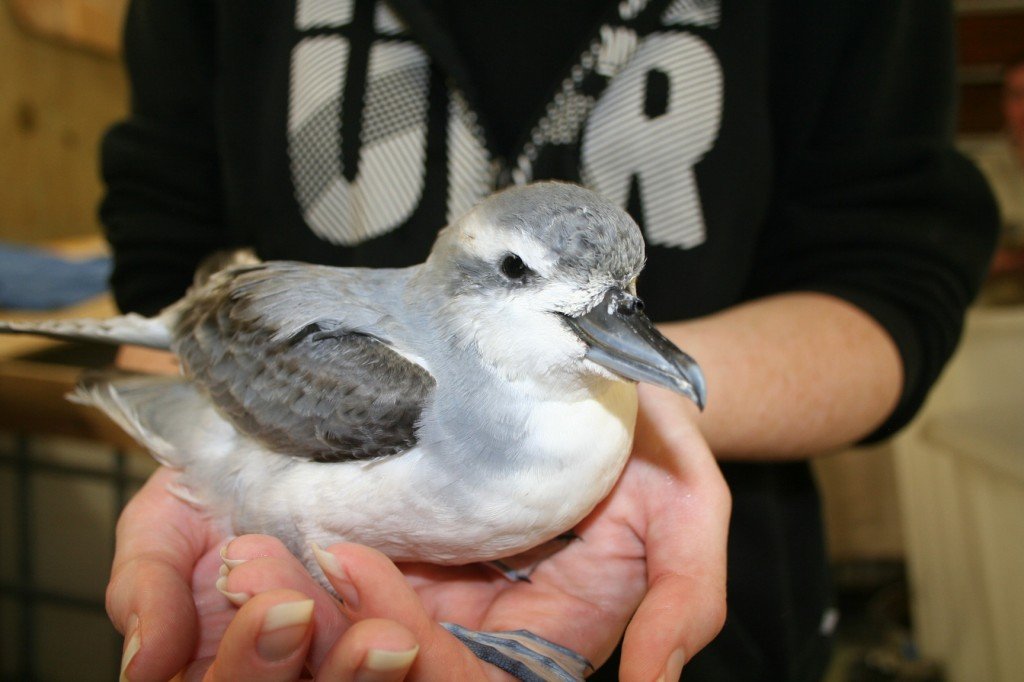




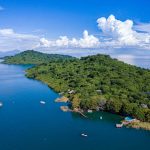



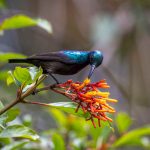


We saw hundreds of dead prions-mostly fairy-washed up near Portland, Victoria at the end of October 2009 and even more shearwaters….so pleased you are able to help. Those birds had starved, sadly.
Most of these guys were in reasonable condition when they wrecked, they had been able to feed until the point they got blown ashore. Quite a few have now been released back. I’m not sure how accurately we’ll be able to gauge how much this has affected the colonies though.
Thanks Duncan, I followed the link to Colin’s article, definitely must-read and made a comment there.
PS thanks for the photos showing the difference between the birds.
No worries Barbara. I’m only annoyed my photo of the Fairy Prion bill didn’t work!
A day so fair and foul I’ve never seen.
Participating in such a rehab effort is certainly a dream-come-true and a great adventure. As you mentioned, how often does one get the chance to see the lamellae on prions – how often does one get the chance to see any part of a prion whatsoever? But then again, as with vagrant passerines on some off-shore island, these birds are having a particularly bad day.
I’m not sure if it was a dream come true. It was certainly rewarding (and really hard work) but I’d rather deal with happy at sea prions than rather miserable landlocked ones!
Duncan- I was on a recent expedition to the South Indian Ocean and we saw large numbers of Prions including MacGillvary’s. I am preparing a trip report for my web site and would really like to use a couple of your great prion pictures for reference photos for bill morphology. I would of course give you full credit. Let me know if this would be ok.
I am really very interested in Prion identification and after my trip report will be working on an in depth review of field identification of Prions. These pictures would be extremely helpful in this regards.
Thanks
Kirk Zufelt